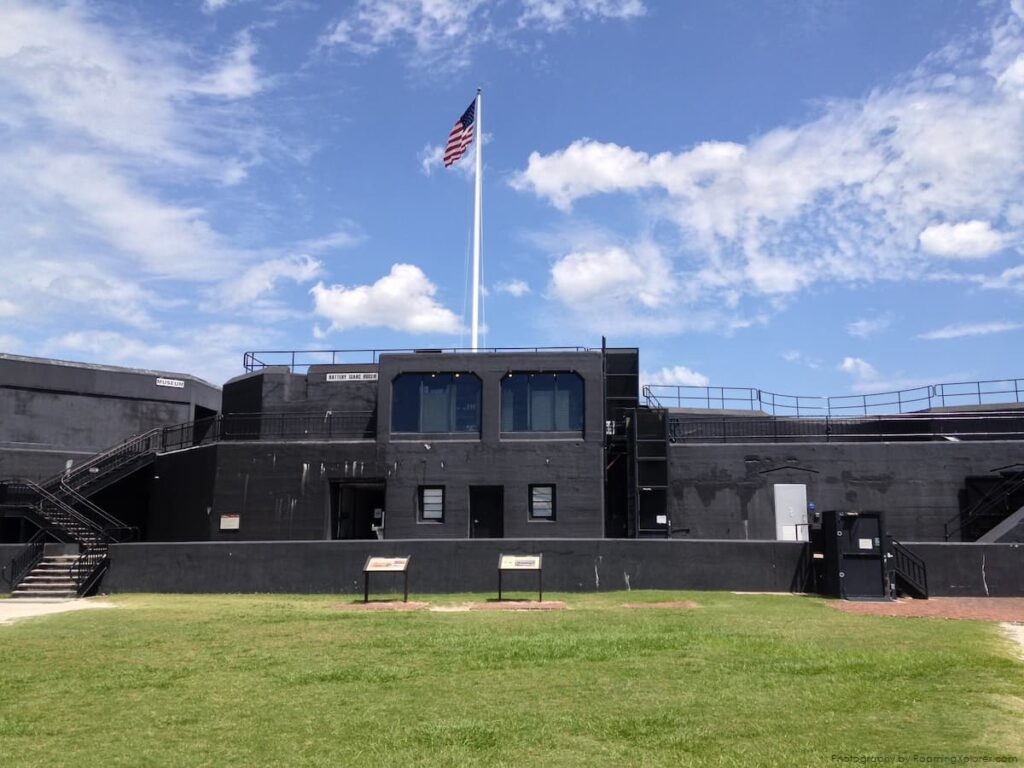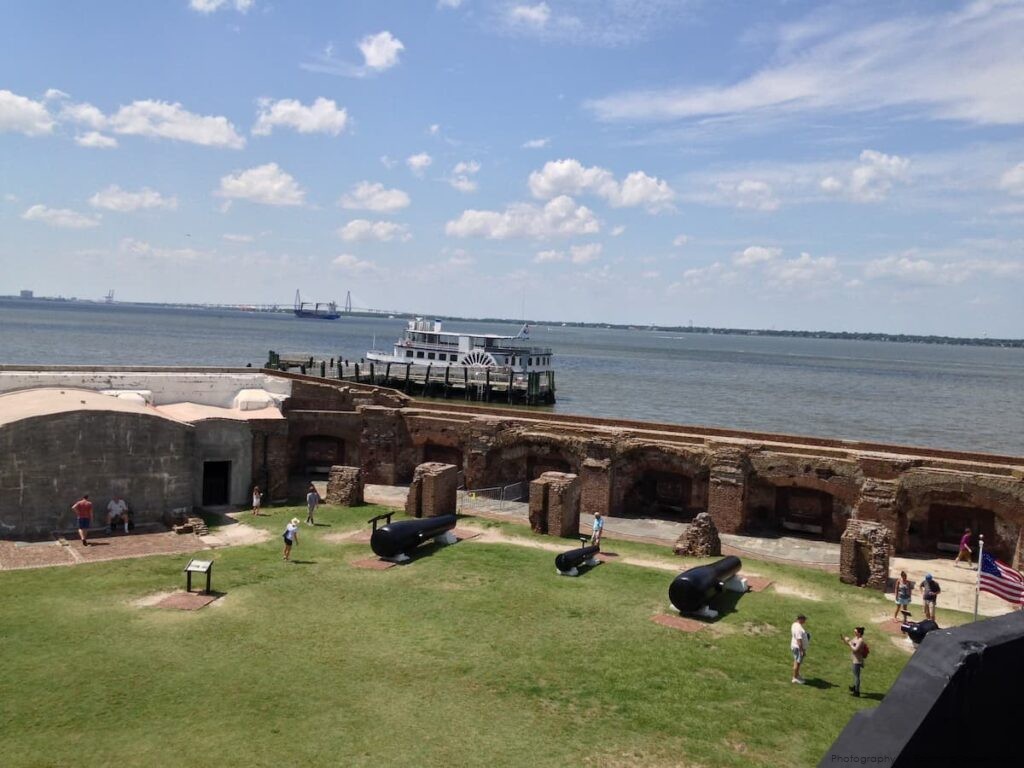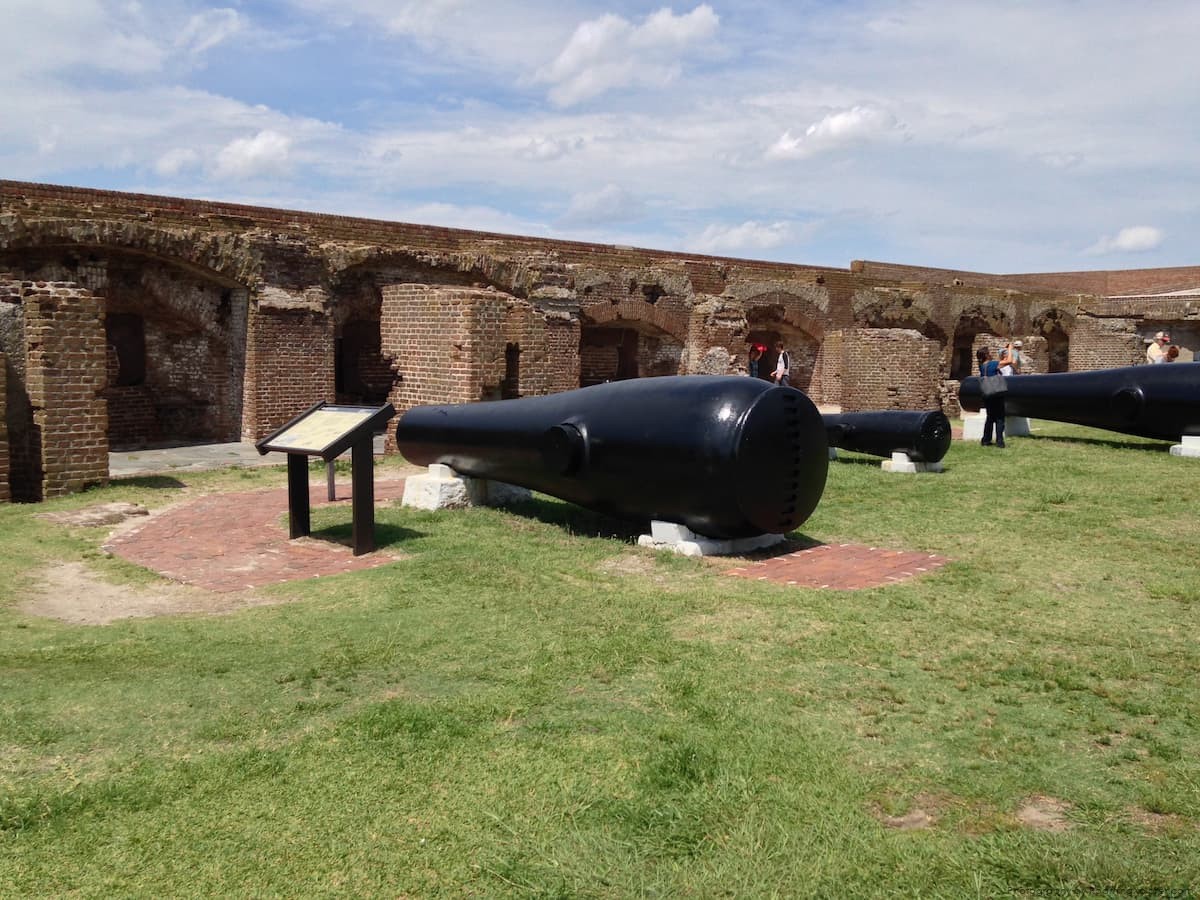Standfirst: Fort Sumter National Monument in Charleston, South Carolina, offers a powerful connection to the past. Visiting this iconic site, where the first shots of the American Civil War were fired, is both a historical and reflective experience.
Charleston, South Carolina, has always been known for its charm, history, and Southern hospitality. But for those interested in American history, one place stands out—the Fort Sumter National Monument. Nestled on an island at the entrance to Charleston Harbor, this site marks the beginning of the Civil War, where the first shots were fired on April 12, 1861.
I’ve been fortunate to visit many historical landmarks during my travels, and Fort Sumter was no exception. Standing on the grounds of a place so pivotal in shaping American history was both awe-inspiring and humbling. Here’s a look at my visit and the importance of this monument, blending my experience with the fascinating history of the fort.

Arriving at Fort Sumter
The journey to Fort Sumter itself is an experience. Access to the island is only possible by boat, so I boarded the ferry from the Fort Sumter Visitor Education Center located in downtown Charleston. As the ferry slowly made its way across the water, I couldn’t help but imagine how this harbor must have looked over a century and a half ago when tensions between North and South were about to explode into war.
The views from the ferry were breathtaking. The Charleston skyline, the expansive harbor, and the fort coming into view created a moment of anticipation. There’s something surreal about approaching an island that played such a crucial role in the Civil War, knowing the significance of the events that unfolded here.
The History Behind Fort Sumter
Fort Sumter’s history begins in the aftermath of the War of 1812. The U.S. government realized the need for a coastal defense system, and Fort Sumter was part of a series of forts designed to protect the southern coastline. Construction began in 1829, but it wasn’t completed until 1861, just in time for the Civil War.
When South Carolina seceded from the Union in December 1860, tensions mounted. The fort, held by Union forces but surrounded by Confederate territory, became a symbol of the brewing conflict. On April 12, 1861, Confederate forces fired upon Fort Sumter, marking the start of the Civil War. After 34 hours of bombardment, Union forces surrendered the fort, and it remained in Confederate hands for most of the war.
Stepping Into History
Once the ferry docked, I walked along the pathway leading into Fort Sumter. Even though much of the fort lies in ruins today, you can still see the original brickwork and the remains of the imposing walls. The sense of history here is tangible. I could almost hear the distant echoes of cannon fire and feel the tension that must have filled the air in those fateful days.
The park rangers at the site gave a brief but engaging talk about the history of the fort, explaining the events that led up to the bombardment and what happened in the aftermath. What struck me most was how this tiny fort became the flashpoint for a war that would claim over 600,000 lives and forever change the United States.
Walking Through the Ruins
Walking around the fort, I marveled at the scale of the brick walls that still stand. The fort is shaped like a pentagon, and while it was never fully completed, its massive walls give a sense of the military strategy of the time. Standing near one of the cannons that remain on display, I couldn’t help but reflect on how soldiers from both sides must have felt while stationed here—fearful, determined, uncertain of what lay ahead.
The walls of Fort Sumter are scarred with the marks of cannonballs and shells, serving as a reminder of the intense fighting that took place here. Despite the damage, the fort still retains much of its original structure, and walking through it felt like stepping back in time.

Exploring the Museum
After walking the grounds, I took time to explore the museum located inside the fort. The exhibits here are a treasure trove of information, offering more details about the fort’s history, the events leading up to the Civil War, and the impact of the war on Charleston and the nation.
One exhibit that caught my attention was the display of the Union flag that flew over the fort during the bombardment. Despite being tattered and torn, the flag symbolizes the fort’s significance in American history and the courage of those who fought to defend it.
Another fascinating part of the museum is the collection of artifacts recovered from the site, including cannonballs, weapons, and personal items from soldiers. These items provide a glimpse into the daily lives of those who served at Fort Sumter during one of the most tumultuous times in American history.
A Moment of Reflection
Standing on the ramparts of Fort Sumter, looking out over the harbor, I took a moment to reflect on the magnitude of the events that unfolded here. The Civil War was a tragic chapter in American history, but visiting Fort Sumter brought the history to life in a way that reading about it never could. The fort is more than just a historic site—it’s a place of remembrance, a reminder of the sacrifices made by so many.
For me, Fort Sumter was not just about learning the facts of history but about feeling the weight of those events. It was a reminder of the cost of division and conflict, and of the resilience of the nation to rebuild and move forward.
Practical Tips for Visiting Fort Sumter
- Getting There: The only way to reach Fort Sumter is by ferry. Ferries depart from two locations: the Fort Sumter Visitor Education Center in downtown Charleston and Patriots Point in Mount Pleasant. It’s a good idea to book tickets in advance, especially during peak tourist season.
- Best Time to Visit: The spring and fall months are ideal for visiting, as the weather in Charleston can be quite hot and humid in the summer. Early morning or late afternoon ferries are great options to avoid the midday heat.
- What to Bring: Comfortable shoes are a must, as you’ll be doing a fair amount of walking. Don’t forget sunscreen, a hat, and a camera to capture the stunning views of Charleston Harbor.
- Time Needed: Plan to spend about 2 to 3 hours at the fort, including the ferry ride. This gives you enough time to explore the fort, visit the museum, and take in the history without feeling rushed.
Why Fort Sumter Should Be on Your Travel List
If you’re a history enthusiast or simply looking to deepen your understanding of the Civil War, Fort Sumter National Monument is a must-visit. Its role in American history is undeniable, and the site itself is beautifully preserved, offering visitors a chance to step into the past. For me, the experience was deeply personal, reminding me of how fragile and precious peace can be.
Visiting Fort Sumter allowed me to not only learn about the Civil War but also reflect on the broader themes of conflict and reconciliation. It’s a place where history feels alive, and standing there, amidst the ruins, you can almost feel the presence of those who lived through one of the most significant events in American history.
Final Thoughts
Fort Sumter National Monument is more than just a historic site; it’s a journey through the beginning of the Civil War and a reflection on the nation’s past. The fort may be in ruins, but its story continues to resonate, offering visitors a chance to connect with history in a profound way.
My visit to Fort Sumter was both educational and deeply moving, a reminder of the importance of understanding the past in order to shape a better future. For anyone traveling to Charleston, this monument should be at the top of your list.
More information: https://en.wikipedia.org/wiki/Fort_Sumter
![]()

